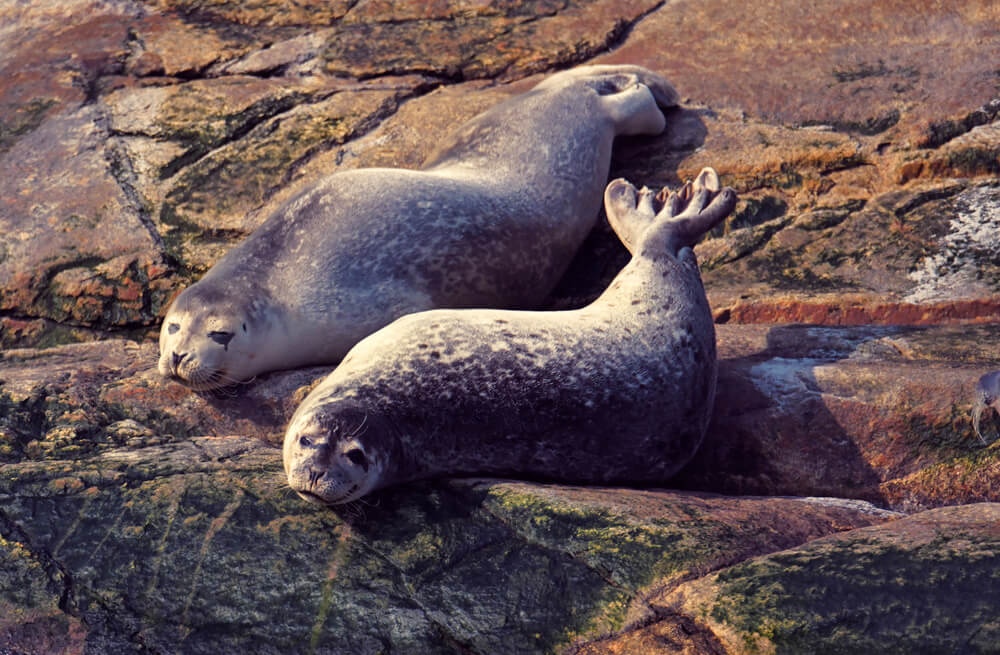Tuesday, May 23, 2023. For amateur cetologist René Roy, this is his second time on the water this season. During an 80 nautical mile trek between Matane, Pointe-des-Monts and Franquelin, he encounters a large number of belugas, several porpoises, harbour seals and harp seals, not to mention plenty of seabirds.
“There were about forty belugas roughly 5 to 7 [nautical] miles off Pointe-des-Monts,” he explains. They were very scattered and appeared to be feeding. There were even three youngsters, probably bleuvets [term given by French speakers to second-year calves].” On a calm sea with good visibility, he sails the Lower Estuary of the St. Lawrence, logging over 6 hours of observations.
A few days earlier, over the weekend, local residents were also able to venture out on the water. One minke whale was reported, as were a few harbour seals.
Beluga calves are born after fourteen to fifteen months of gestation; females give birth between June and September. When they are first born, calves have a colour that can best be described as “café au lait.” Their colour gradually changes to a dark bluish-grey, at which point they are referred to as “bleuvets.” After two years, they turn grey and then slowly fade until they are completely white in adulthood.
Marine life in all its diversity
In Franquelin, it was during a first paddleboard outing of the spring that a marine mammal enthusiast was able to enjoy views of the local fauna. As she sets out on her craft, she spots the snouts of two harbour seals, after which she began to see whales: “In the tide rips, two minke whales quickly streamed by, travelling long distances between each breath.Lastly, a tiny breath so brief and so small that I had trouble seeing the harbour porpoise that was passing by.” When she’s back near shore again, the adventure ends just as it began… with pinnipeds! “A harbour seal surfaced a few times near me,” she says. It made sure it could watch me while keeping its distance, a bit like anyone who’s in their own bubble!”
In Gaspé Bay, a few quietly swimming harbour seals were observed. Several humpback whales were seen from Pointe Saint-Pierre. Lying halfway between Forillon and Percé, this is an ideal place to head out in search of marine wildlife with one’s binoculars! In the Saguenay-St. Lawrence Marine Park, a wide array of species is observed: harbour seals and belugas in Les Escoumins, harbour porpoises, grey seals, belugas and harp seals at Cap de Bon-Désir in Les Bergeronnes, in addition to belugas, a minke whale and harp seals in Tadoussac. Three naturalists were able to admire a group of white whales from the rocks at Cap de Bon-Désir. “We were even able to see the belugas through the clear water,” mentions one of them.
Whether it’s from shore or on the water, there’s been no shortage of sightings of late! Even if watching fauna from shore requires perseverance, observers’ patience is often rewarded with the chance to admire animals peacefully going about their lives in their natural environment. For those who are just getting their feet wet with recreational boating, the Whales Online team strongly advises completing the Boater’s Training available at navigationbaleines.ca to learn the best behaviours to adopt in the presence of marine mammals in order to avoid disturbing them.








